“When you are 16, you think you are invincible. The world is your oyster. Your biggest dilemma is usually who is going to ask you to the homecoming dance or if you and your BFF are both going to make the soccer team. I wish I could have told my 16-year-old self to soak in those moments just a little bit more. But how was I to know that my world was about to come
crashing down?
Before I was diagnosed with cancer, I was an avid soccer player, a busy teenager, and didn’t have a care in the world. I had a master plan of going off to college to play soccer somewhere, meeting my soul mate, and getting married. You know, typical 16-year-old girl thoughts.
However, my master plan started to unravel in January of 2010 when I started experiencing pain in my right hip. I would come home from soccer practice in tears because I was in so much pain. But, I had the ‘suck it up’ mentality that had been instilled in me from playing sports for my entire childhood. We chalked up as a sports injury, and I started physical therapy to help solve the issue. After weeks of no relief, I had an MRI.
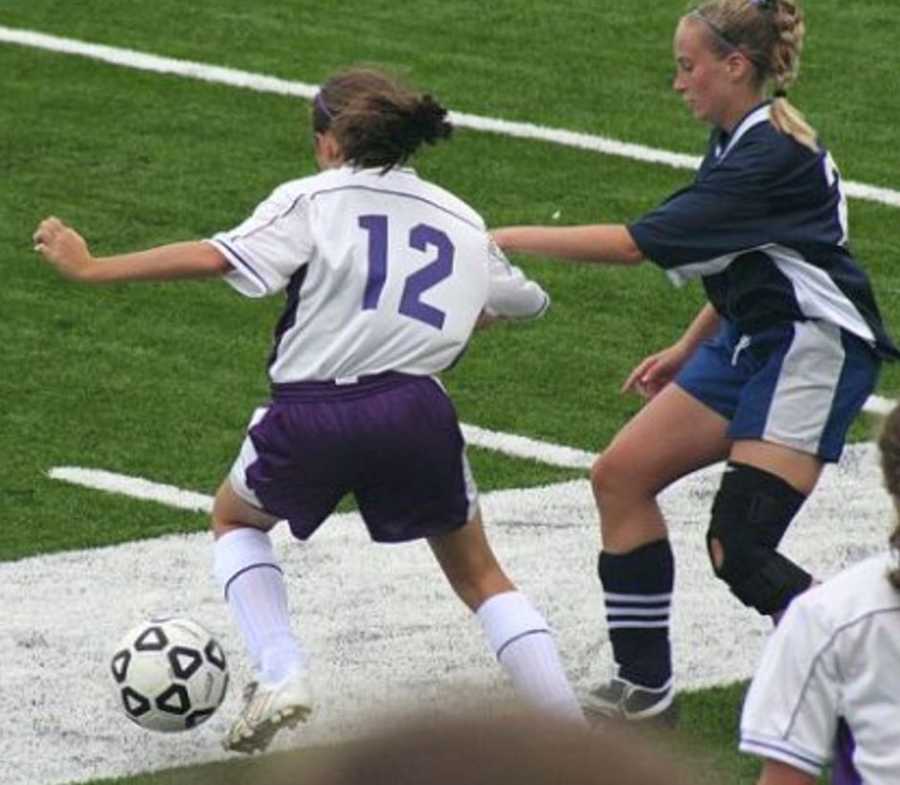
I remember sitting in that MRI machine for what felt like an eternity. They kept running more and more scans. Afterward, they pulled me and my parents into a room and showed us a grapefruit-size mass on my right hip. They sent me for a biopsy, and it came back as Osteosarcoma, or bone cancer.
They sent me home and said, ‘Have a good Easter weekend, and we will see you on Monday to place your port and start chemotherapy.’ I remember thinking: ‘How could this be? They must have made a mistake.’ I was 16, active, and healthy. This wasn’t supposed to happen to people like me. That certainly was not in my master plan.
I became incredibly sick while going through chemotherapy. I lost so much weight that I needed a feeding tube. I couldn’t keep any food down and was throwing up multiple times a day. The plan was to do ten rounds of chemotherapy, which consisted of 4-5 days in the hospital and a couple of days at home to ‘recover’ before coming back for the next round. The goal was to
shrink my tumor enough to remove it safely. If being this sick meant that my tumor was shrinking… ‘It is worth it,’ I thought.
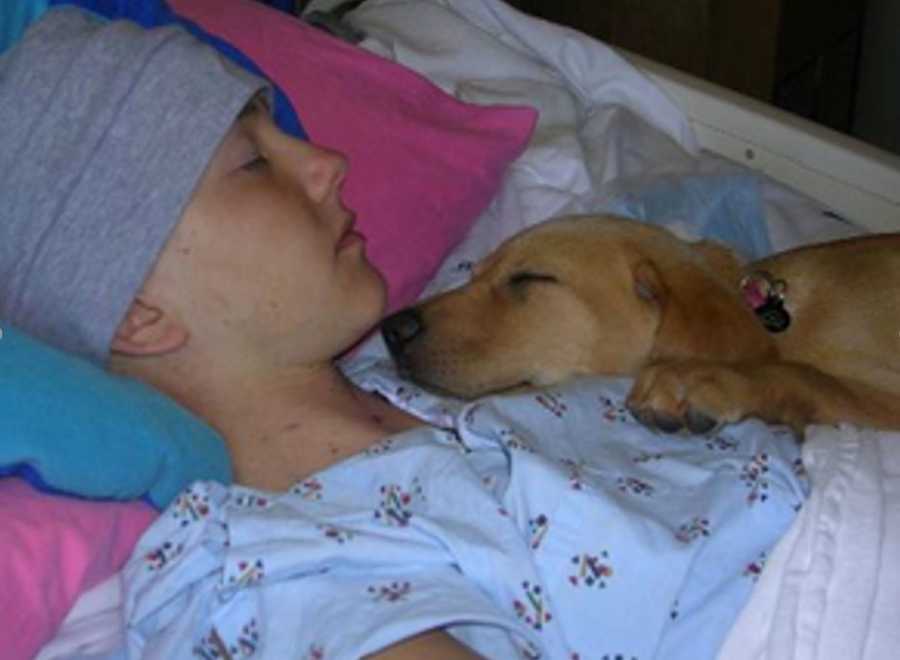
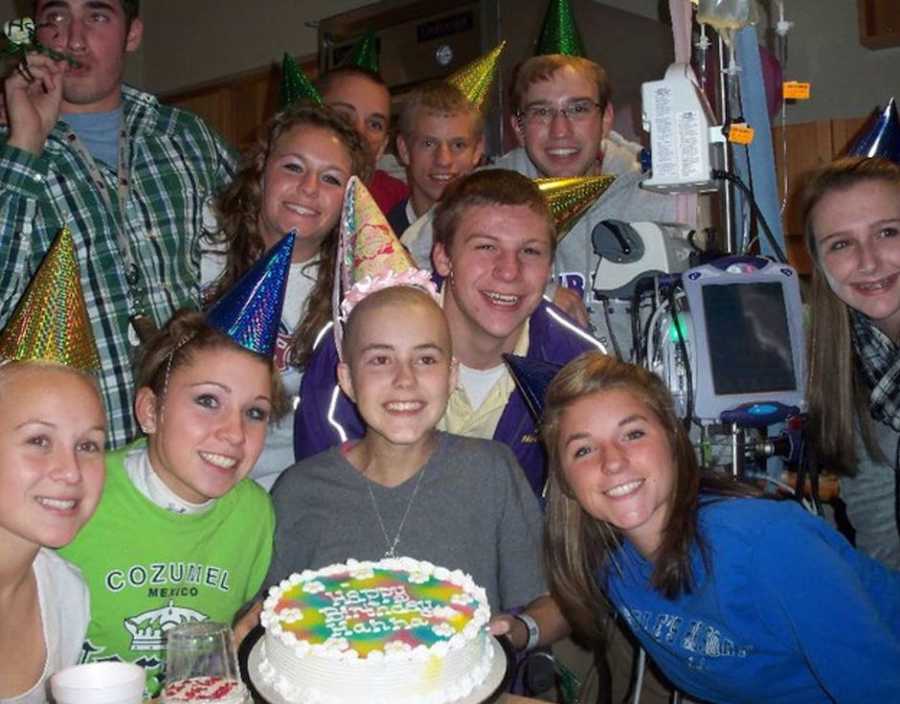
I remember anxiously waiting in the doctor’s office following my tenth round of chemotherapy. As soon as the doctor came into the office, I knew the news wasn’t good. I could tell by the look on his face. He got down on one knee, grabbed my hand, and said, ‘I’m sorry, but your tumor didn’t shrink, at all.’ As tears streamed down my face, he told me that the best option for
survival would be the amputation of my right leg, hip, and half of my pelvis.
I had so many things running through my head at that moment. I would never be able to play sports again, I’d never walk again, I probably wouldn’t go to college or get married. Everything I had a plan for suddenly came crashing down on me. But I didn’t have any other choice. I wanted to live. I couldn’t fathom the thought of dying at 16.
On June 23rd, 2010, I went through a 23-hour long surgery to amputate nearly 1/3 of my body. I remember waking up from surgery and reaching down, hoping that just maybe they didn’t have to do it. Over the course of the next 3 months, I would spend my days on the inpatient rehab floor of Mayo Clinic, learning to do the simplest of tasks again inside of this new body of mine.
Following surgery, I also did 17 more rounds of chemotherapy. Just when I thought my body could not handle anything else, I had to muster up the energy to be beaten down even more.
In November of 2010, I finished chemotherapy. I remember the emotions I felt as I left the hospital for the very last time as a cancer patient. I really felt like I was leaving there as a totally different human being than when I entered.
Because I was.
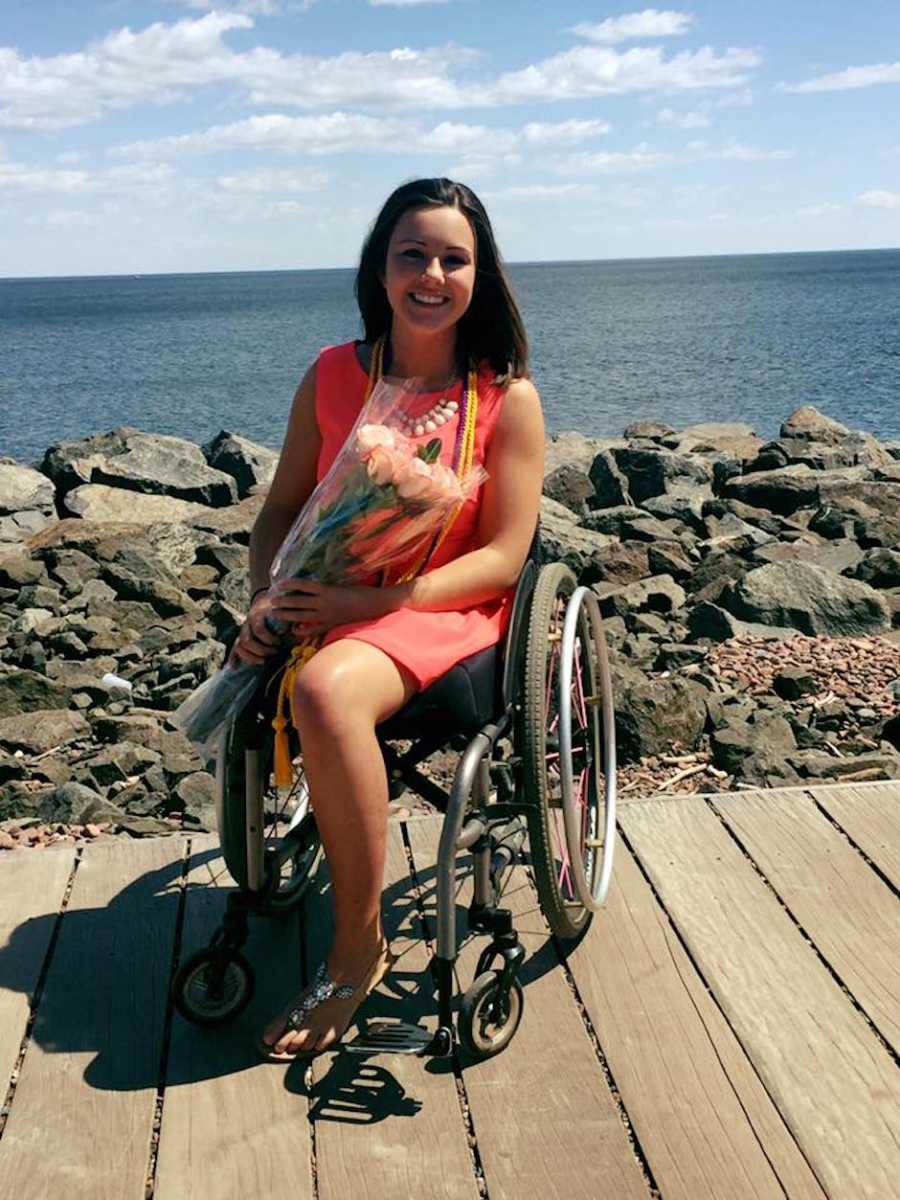
I was so much stronger, so much more resilient, so much more grateful. It was time to get back to a new normal. That year, I graduated high school and went off to college at the University of Minnesota Duluth. This was my fresh start. No one knew me or my story. I wasn’t the ‘cancer kid.’ I was just another face on a college campus. I instantly fell in love with the school and made tons of friends. I was extremely involved and happy. However, I still was missing that competitiveness that soccer had once given me. I had thought my days of sports were over, but I was sure wrong.
One winter morning while looking for an elevator to get to class, I met Ezra. He struck up a conversation with me and asked if I ever thought about playing hockey. I couldn’t help but laugh and ask if he was kidding. I mean, we were both in wheelchairs, right? I said: ‘I thought about it, but that was when I had two legs.’ He then proceeded to show me a video of sled hockey, and
curiosity got the best of me, so I agreed to try it out. I instantly fell in love.
A competitive nature is something that has always been instilled in me. I have this drive to succeed and to work hard to do everything I can to get there. That’s probably why I was able to fight cancer so hard. I wanted to give up so many times, but I just could not let myself do that. It was the same with everything else in my life, including hockey. I had that competitive drive to push myself to become better and work harder than the day before.
Shortly after graduating from college in August of 2016, I tried out and was selected as a member of the USA Women’s Sled Hockey team. It was surreal, going from never thinking I would play competitive sports again to now playing for team USA. Hockey was a huge driving force in my recovery. When I found hockey, I found normalcy. I found a way to be competitive
like I used to be. I found a way to stay active. And most importantly, I found a group of like-minded people that weren’t letting disabilities get in their way. These people pushed me beyond my limits and beyond what I thought would be possible for myself.
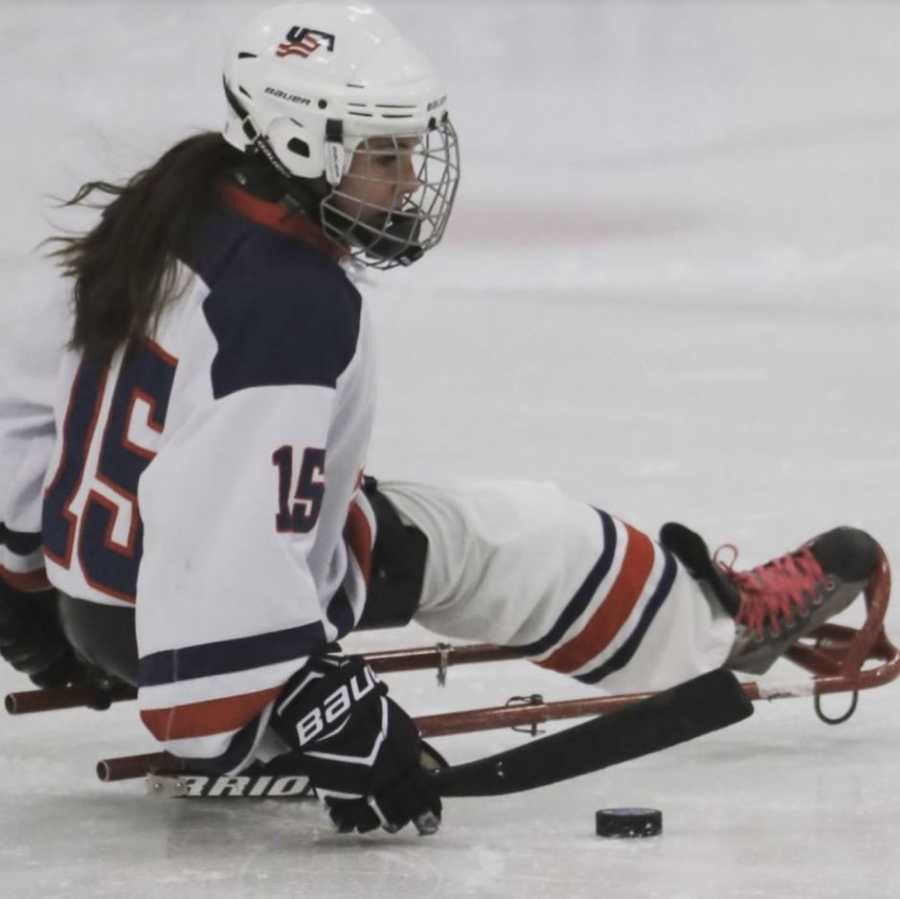
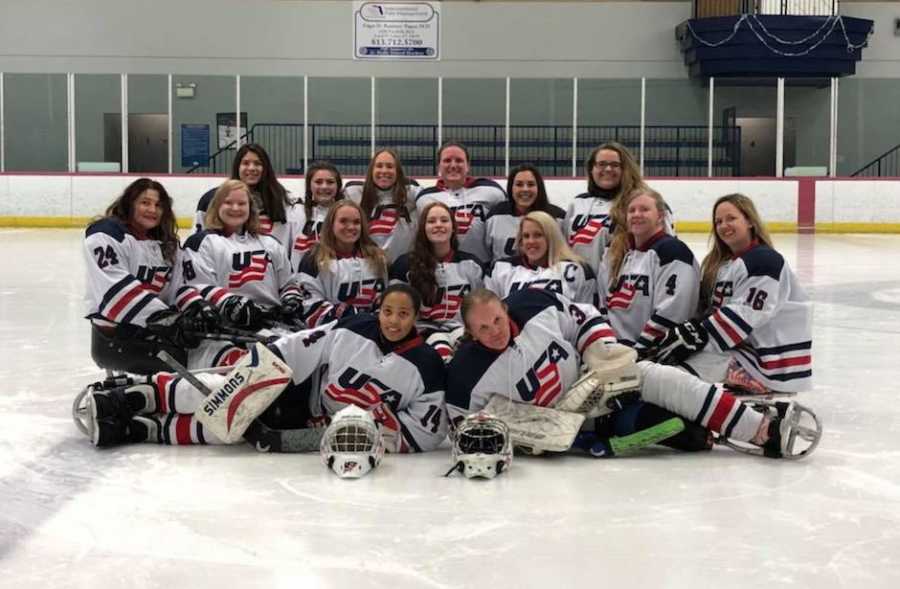
The three seasons that I spent playing for team USA were such a highlight in my life. But, after a recent doctor’s appointment, I decided it was time to ‘hang up the skates’ and focus on other things, like my health. At my ten-year cancer checkup, I received the ‘all clear.’ I was ecstatic. This meant that I no longer needed to be monitored and that my cancer was hopefully gone for
good. However, my oncologist raised concern for me being a carrier of a possible genetic mutation that put me at risk for developing cancer moving forward.
Two common cancers associated with this mutation are osteosarcoma and adrenal carcinoma. When I was two years old, I had an adrenal tumor that had suspicious cells. However, because it was so small, they just removed it and I went on with life. I never thought much of it, until now. Could it possibly be related to my Osteosarcoma? Could there be a bigger issue here? My
oncologist was putting the puzzle pieces together that everyone else had overlooked.
I remember leaving the hospital that day feeling so defeated. I had received the best news that I was 10 years cancer-free. However, I also received news that I might be at high risk for developing other cancers throughout my lifetime. One step forward, two steps back. For the next 10 days, I would check my phone constantly, waiting for the test results. I remember seeing it come through on my phone one afternoon, ‘New Test Result Available.’ My shaky hands managed to log into my clinic app and open it up. Tears instantly started to stream down my face as I read ‘positive.’
I went into the home office, where my fiancé was. He knew instantly. He just sat there and held me. I mean, what do you even say to someone? It was the strangest thing because I was technically healthy. Yet, I felt as though I just received a debilitating diagnosis. Here I was again, coming face to face with cancer, but in a really roundabout way.
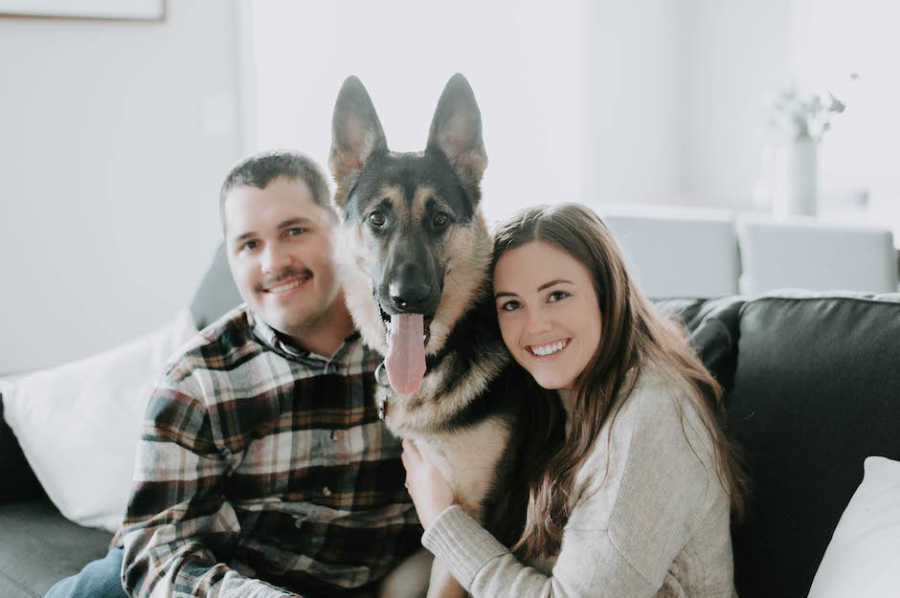
This mutation is called Li-Fraumeni Syndrome. It puts me at a very high risk to develop cancer throughout my lifetime. The TP53 gene is a tumor suppressor gene. A mutation in this gene gives people a much higher risk of developing various cancers. Specifically, it gives men a nearly 70% lifetime risk of developing at least one cancer and women a nearly 100% chance, due
to the high risk of breast cancer. Common cancers associated with the TP53 mutation are adrenal, sarcomas, breast, and brain cancer. Although it doesn’t stop there. TP53 is also associated with lung, gastrointestinal, kidney, thyroid, skin … I think you get the point. It’s a lot of cancer.
The one thing that kept coming to my mind though was that I was born with this mutation. It had always been part of me, and I just didn’t know it. I lived my life all these years without this worry or burden of ‘knowing,’ so why did I have to start letting it control my life now? I didn’t, and I chose not to, moving forward. I was the same me, just more knowledgeable now. And you
know what they say: knowledge is power.
Thankfully, I am fortunate to have an oncologist who is familiar with this rare disease. She set me up on a proper screening protocol that put me in a position of power to be proactive about my health. Three times a year: blood work; once per year: full-body MRI, brain MRI, abdominal ultrasound, mammogram, breast MRI, and dermatology exam; and every other year: a
colonoscopy and upper endoscopy. The goal was that if another cancer formed, we catch it right away.
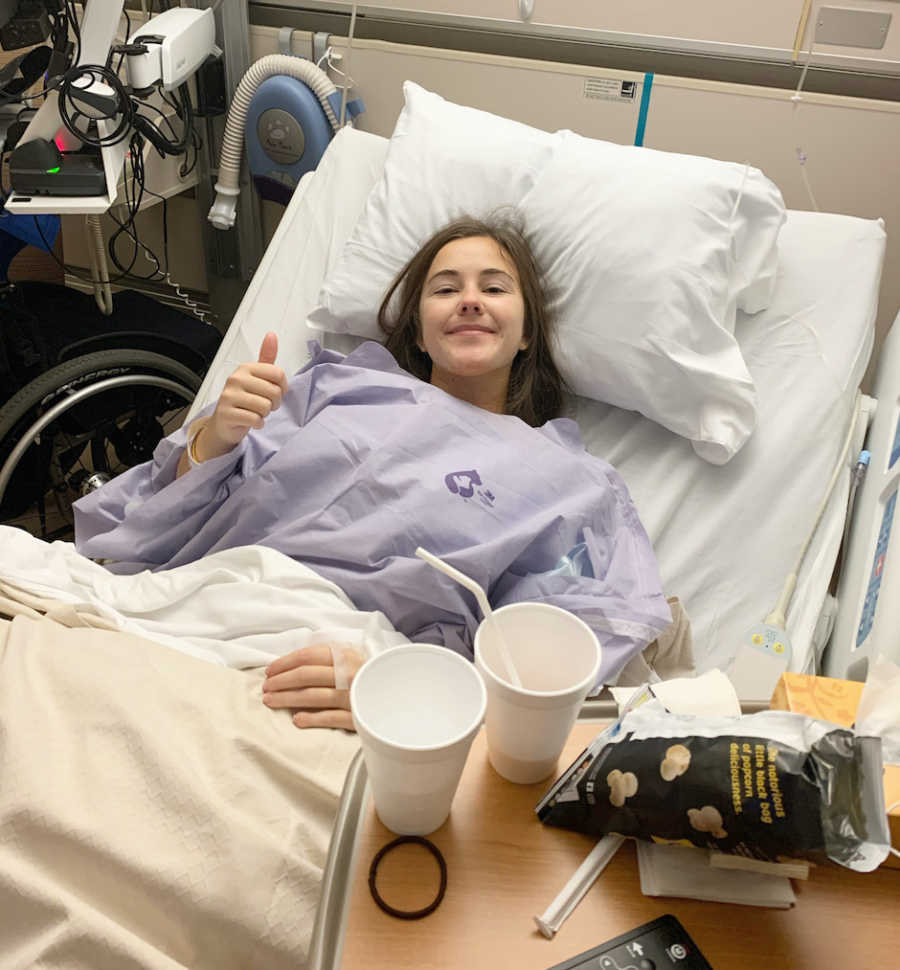
However, there was one more thing that was suggested beyond the screenings. That one thing was a prophylactic bilateral mastectomy. I became sick at the thought of being stripped of yet another body part. I felt too young to be doing this at only 27. Was my entire right leg, hip, and half my pelvis not enough? But, I knew what I needed to do. I knew that if I wanted to stay ahead of this monster that is cancer, I needed to go through with the double mastectomy.
There was one more obstacle though. I was getting married in just a few months. I remember feeling sick to my stomach as I thought about having to cancel my wedding. As if I hadn’t already had enough bad news, I didn’t need to also be stripped of the one thing I was looking forward to most. Thankfully, I was monitored very closely in the interim and was able to go through with my wedding as planned. Then, I scheduled my mastectomy.
I feel so fortunate that I was able to do this on my own time because I know not everyone is that lucky. On November 9th, 2020, I went through with a prophylactic bilateral mastectomy. Although it has been difficult, I feel this extreme sense of relief. Being able to minimize my nearly 100% chance of getting breast cancer has been a huge weight lifted off my shoulders.
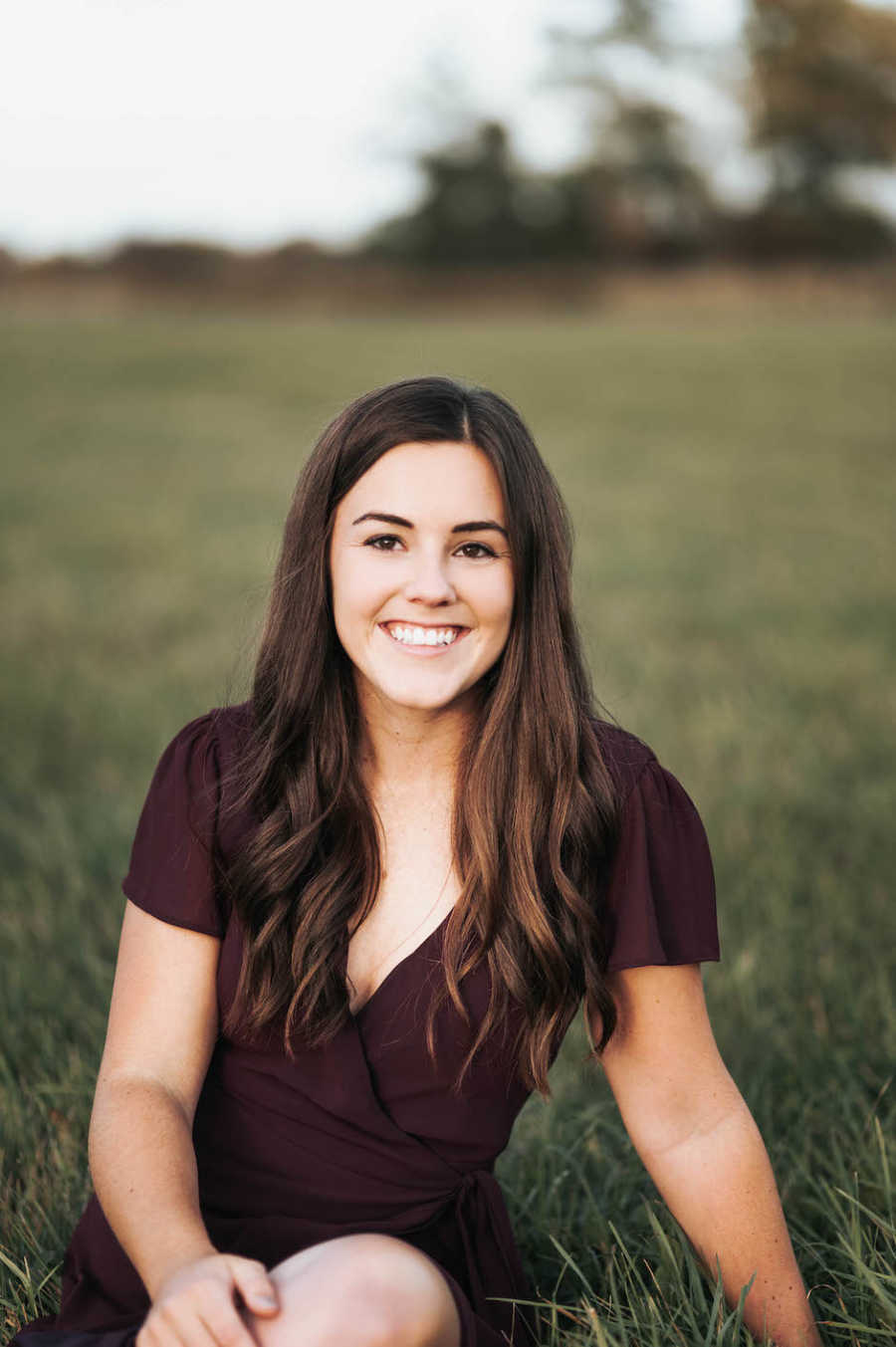
I am so fortunate to have had access to genetic testing and the resources I need to make informed and proactive decisions about my health. This has given me such a different perspective on life. I am now both an osteosarcoma cancer survivor and breast cancer ‘previvor.’ And let me tell you, it feels way better to be on the previvor side of things.
It’s so easy to get wrapped up in our lives and to put aside the appointments and screenings or to brush something off as nothing. But, our health isn’t going to wait. Cancer isn’t going to wait. It doesn’t care how old you are, what race you are, your gender, or if you are otherwise healthy. So, my advice is… you shouldn’t wait either. Be proactive about your health and be your own advocate.
I hope that my story can help raise awareness of the importance of health, knowing your risk, and being proactive.”
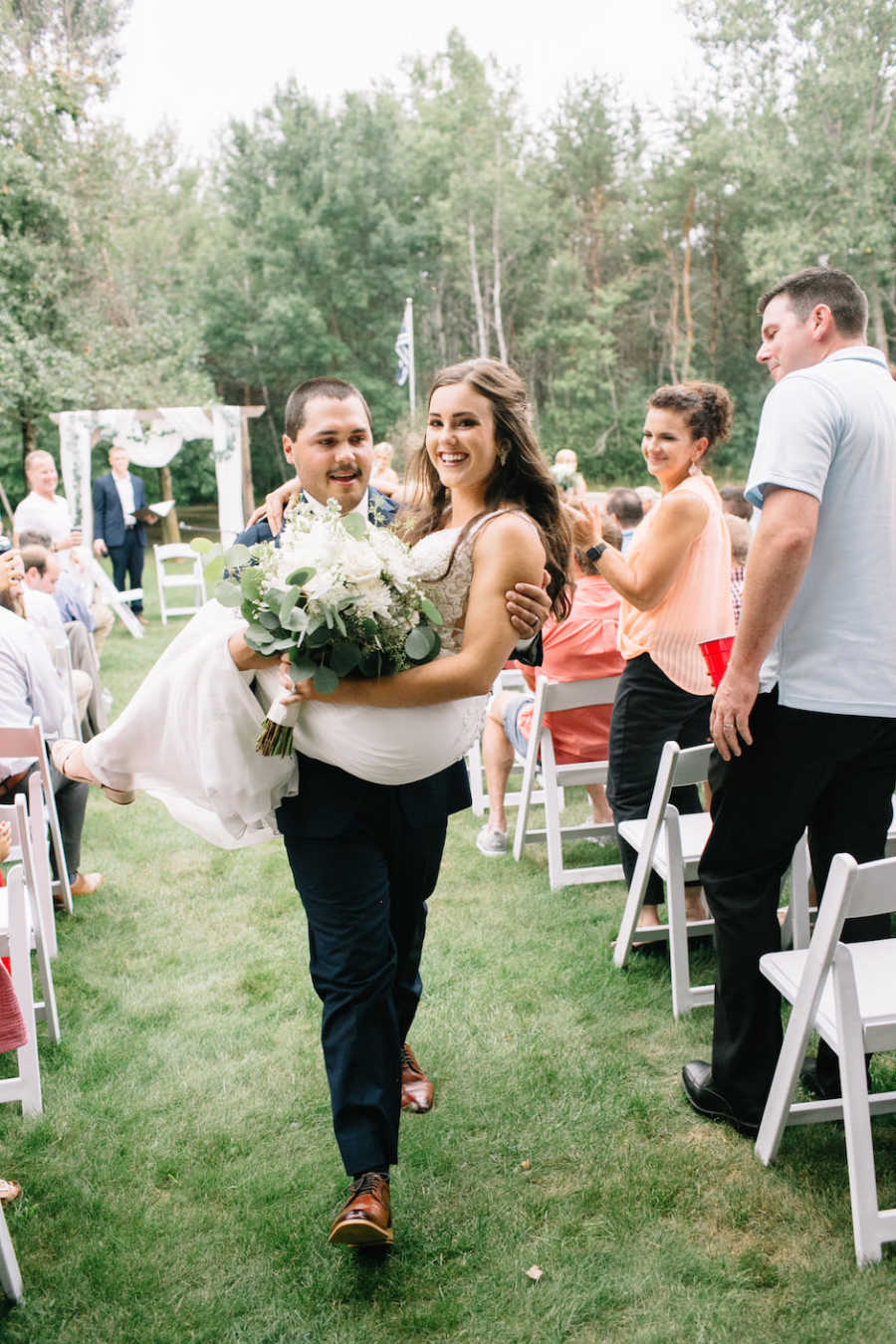
This story was submitted to Love What Matters by Hanna Jorgenson from Hugo, Minnesota. You can follow her journey on Facebook, Instagram, and her blog. Do you have a similar experience? We’d like to hear your important journey. Submit your own story here, and be sure to subscribe to our free email newsletter for our best stories.
Read more touching stories like this:
Provide strength and encouragement for others and SHARE this story on Facebook with your friends and family.

